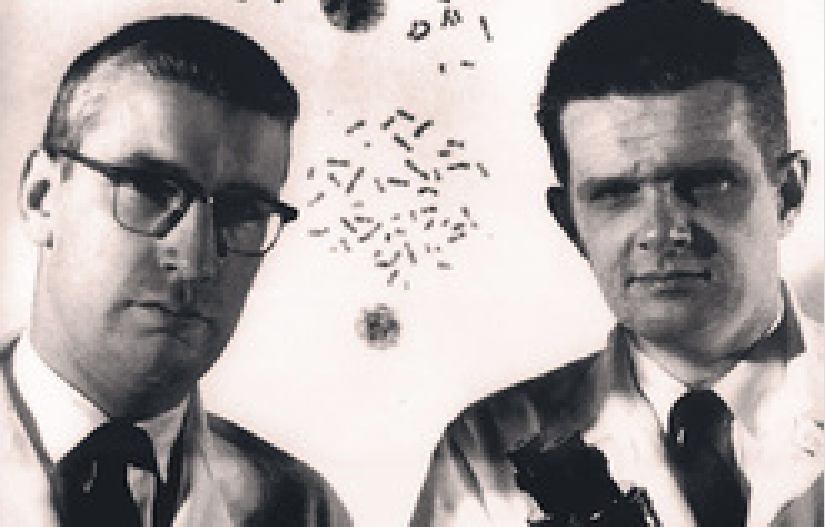In April 2017 I published a post titled “Why is there so much talk about Epigenetics?”. I think I did a pretty decent job explaining what Epigenetics is, and why it is such a critically important part of biology. The gist is, that the regulated output of our genomic information depends on Epigenetics. This is achieved by specific chemical groups and protein along the chromosomes that control their expression into the proteins and other products needed for the life of a particular cell.… Read the rest “Why there is so much talk about Epigenetics”
fastball: movement and speed – updated
Baseball is the subject of many artistic creations and scientific studies. Movies such as “Field of Dreams”, “Bull Durham”, and “Moneyball” depict baseball embedded in the larger American culture. Books such as the elegant “Game Time: A Baseball Companion”, by Roger Angell, are a literary pleasure even for someone only peripherally familiar with the game. And baseball has also engendered a broad culture of analysis through applied physics. The pitch is an object of particular fascination for the physics-inclined baseball fan.… Read the rest “fastball: movement and speed – updated”
Chronic Myeloid Leukemia: a Molecular Diagnosis
Peter Nowell and David Hungerford in 1960
Chronic Myeloid Leukemia (CML) is not a cancer you hear about very often. That’s not because it isn’t serious — until recently, it carried a frightening prognoses. Until about 2000, newly diagnosed CML patients had a 5-year survival rate of 31%. But we don’t hear much about CML because it is a rare disease, and affects far fewer people than cancers of the breast or prostate, or lung cancer.… Read the rest “Chronic Myeloid Leukemia: a Molecular Diagnosis”
Chronic Myeloid Leukemia: A Molecular Solution
Dr. Brian Druker and Ms. LaDonna Lopossa, one of the earliest patients to benefit from Gleevec
Rob Schick is the Branch Manger of the Baird Wealth Management Group in Portland, Oregon. Most people would probably consider him lucky. For starters, Portland is one of the most desirable cities in the United States to live in. He and his wife have three grown children, one of whom works at the same company. In addition to his success in business, Rob Schick’s efforts on behalf of the Knight Cancer Institute, where he has helped raise millions of dollars for research, were nationally recognized in 2015 by a National Community Service Award from the Invest in Others Foundation.… Read the rest “Chronic Myeloid Leukemia: A Molecular Solution”
Calories in equals calories out?
“I think the notion of ‘calories in vs. calories out’ is ridiculous.” So begins a recent online article about diet. Typically, it cites no external sources of information for this opinion. Actually, the calories in – calories out equation is a truism; thermodynamics doesn’t make exceptions, and one way or another, those input calories have to go somewhere. But the thought underlying the denial of equivalence is usually something different, such as, why does my friend eat anything she likes and stay slim, when I can’t?… Read the rest “Calories in equals calories out?”
The Gila River People, Victims of Modernity
The present-day Gila River in the Gila Box Riparian National Conservation Area in southeast Arizona.
Both nature and nurture affect human obesity. For some people, and for some populations, the genetic tendency to become obese is not fulfilled because of their environment, the circumstances of their lives. But when those circumstances change, the genetic potential may be realised quickly, and lead to the medical issues that follow from obesity. An example that starkly illustrates this comes from the sunbaked desert south of Phoenix, Arizona.… Read the rest “The Gila River People, Victims of Modernity”
The Trouble With Roundup
If there were a contest to name the most-hated chemical, Roundup, Monsanto’s brand name for the chemical Glyphosate, would have a very good chance of winning. It has been identified not only as a plant poison, but also a destroyer of monarch butterflies, an impoverisher of developing-world farmers, and a probable carcinogen. These are serious issues. But they are also complex, and I will argue, they are not settled (except for being a plant poison).… Read the rest “The Trouble With Roundup”
Speed Limits
Jesse Owens starting the 200 meter race at the 1936 Olympics. Reproduction of photograph in “Die Olympischen Spiele, 1936” p.27, 1936.
Coverage of the recent victory of the New Zealand team in the America’s Cup yacht race featured sailboats flying along on their underwater foils at ridiculous speed, speeds reaching more than 50 miles (80 km) per hour. Whether it’s running, or driving a car, or sailing these mutant boats, speed is exciting.… Read the rest “Speed Limits”
A Great New Book
There’s a great book about vitamin A, “Brilliance & Confusion: Saving Children’s Vision & Lives With Vitamin A”. Okay, I confess. It’s my own book a couple of years ago. Vitamin A was discovered in 1913, but it has continued to provide surprises since. The most important of these is that it isn’t essential just for vision, which is what most people know about it. Rather, it is needed to maintain many functions necessary for health, and life itself.… Read the rest “A Great New Book”
GMO
It’s a good idea to look critically at any powerful new technology, and the creation of genetically-modified organisms, GMOs, is no exception. Like any new technology, it might have unanticipated, deleterious consequences that outweigh any benefit. Many criticisms of GMO have of course been raised, as a brief interrogation of the internet will show. But unfortunately, the criticisms of GMOs we hear most often are not the most important ones, and the ones that are most important are often not heard clearly.… Read the rest “GMO”










